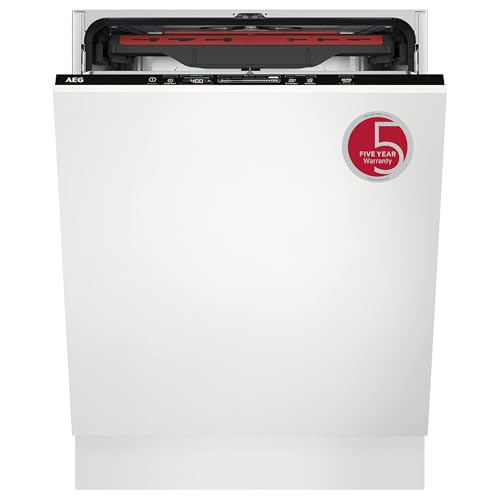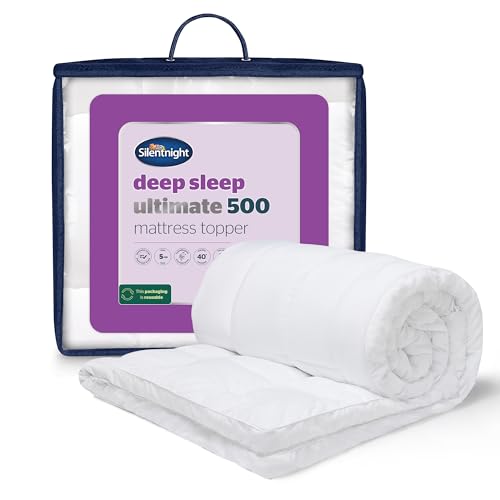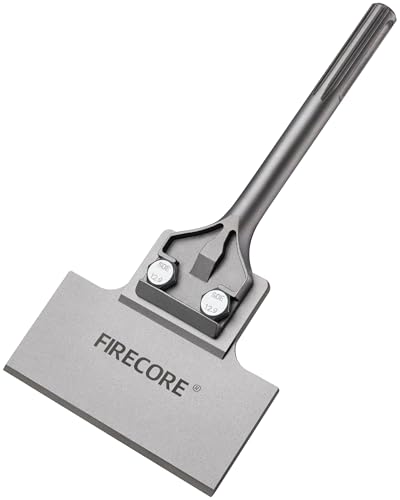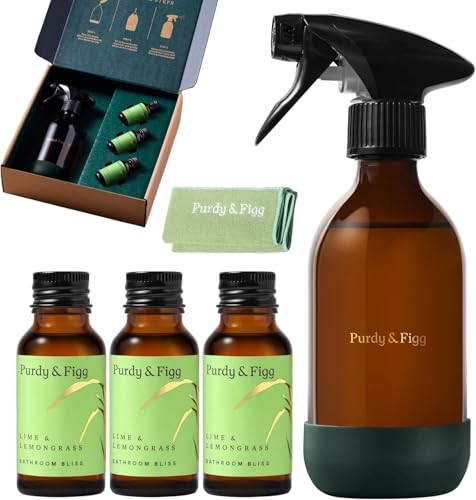




Welcome to our ultimate guide on cleaning and maintaining slate floors. Slate floors offer a unique and elegant touch to any space, but they require special care to keep them looking their best. In this comprehensive guide, we will share expert tips and advice to help you properly clean and maintain your slate floors.
First and foremost, it’s important to understand that slate is a natural stone that can be susceptible to damage if not properly cared for. Regular cleaning and maintenance will not only preserve the beauty of your floors but also extend their lifespan. Whether you have slate floors in your kitchen, bathroom, or any other area of your home, these tips will help you keep them in top condition.
When it comes to cleaning slate floors, it’s crucial to use non-acidic, pH-neutral cleaners specifically formulated for natural stone. Harsh chemicals and acidic cleaners can strip away the protective sealant on your slate floors, causing them to lose their natural sheen and become more prone to stains. We recommend using a mild stone cleaner or a mixture of warm water and a few drops of dish soap.
Regular maintenance is also key to preserving the beauty of your slate floors. Avoid using abrasive tools or scrub brushes that can scratch the surface. Instead, opt for a soft-bristle broom or a microfiber mop to sweep away dirt and dust. It’s also essential to promptly clean up any spills to prevent staining. By following these expert tips and advice, you can ensure your slate floors remain stunning for years to come.
Understanding the Beauty and Durability of Slate
Slate is a natural stone that offers both beauty and durability, making it a popular choice for flooring in many homes and commercial spaces. Its unique composition and characteristics set it apart from other types of flooring materials.
Natural Beauty
Slate is renowned for its natural beauty, with a wide range of colors and patterns to choose from. This stone is formed through the natural processes of heat and pressure, resulting in a unique blend of minerals and rock fragments. The combination of these elements gives slate its distinctive appearance, characterized by rich, earthy tones and intricate textures.
Whether you prefer a rustic, rugged look or a sleek, contemporary aesthetic, slate can be customized to complement any style. From deep blues and grays to warm browns and reds, the color variations in slate add depth and visual interest to any space.
Durability and Strength
One of the key advantages of slate flooring is its exceptional durability. This stone is known for its ability to withstand heavy foot traffic and resist scratches, stains, and damage from everyday wear and tear. Unlike softer flooring materials, such as hardwood or vinyl, slate is less likely to show signs of wear over time.
Slate is also naturally moisture-resistant, making it an ideal choice for areas prone to spills or high levels of humidity, such as kitchens and bathrooms. The dense composition of slate prevents water from seeping into the stone, helping to maintain its integrity and preventing the growth of mold and mildew.
Low Maintenance
Keeping your slate floors looking their best doesn’t require extensive maintenance. Regular sweeping and occasional mopping with a mild detergent are usually sufficient to keep them clean. It’s important to avoid using abrasive cleaners or harsh chemicals, as these can damage the surface of the stone.
Sealing your slate floors can provide an additional layer of protection against stains and wear. A professional sealing every few years can help maintain the natural beauty and durability of your slate flooring.
Conclusion
Slate flooring combines natural beauty with exceptional durability, making it an ideal choice for any space. With its wide range of colors and patterns, slate can enhance the aesthetic appeal of your home or commercial space while providing long-lasting performance. By understanding the unique qualities of slate and implementing a regular maintenance routine, you can ensure that your slate floors remain beautiful and resilient for years to come.
Benefits of Slate Flooring
Slate flooring offers several advantages that make it a popular choice for homeowners and businesses alike. Here are some of the key benefits of slate flooring:
1. Durability
Slate is a highly durable natural stone that can withstand heavy foot traffic and various types of wear and tear. It is resistant to scratches, stains, and chipping, making it an excellent choice for high-traffic areas such as entryways, hallways, and kitchens.
2. Natural Beauty
Slate flooring is known for its natural beauty and unique appearance. It is available in a wide range of colors, patterns, and textures, allowing you to create a flooring design that complements your home or establishment’s aesthetic. The natural variations in the stone add depth and character to any space.
3. Easy Maintenance
Compared to other types of flooring, slate flooring is relatively easy to maintain. Regular cleaning with a damp mop or broom is usually sufficient to keep it looking clean and fresh. Additionally, slate is resistant to stains and spills due to its low porosity, reducing the need for frequent sealing or specialized cleaning products.
4. Versatility
Slate flooring is suitable for both indoor and outdoor use, making it a versatile option for various areas of your home or business. Whether you want to enhance your living room, kitchen, bathroom, patio, or pool area, slate flooring can provide a beautiful and functional solution.
5. Longevity
One of the most significant benefits of slate flooring is its longevity. When properly cared for, slate floors can last for decades, making it a cost-effective choice in the long run. Its durability and resistance to wear ensure that your investment will withstand the test of time.
6. Temperature Regulation
Slate has excellent thermal conductivity, which means it can help regulate the temperature of your space. It stays cool in the summer and retains heat in the winter, making it a comfortable flooring option throughout the year.
7. Eco-Friendly
As a natural stone, slate is an eco-friendly flooring choice. It is a renewable resource that is extracted from the earth without the need for harsh chemicals or extensive manufacturing processes. Using slate flooring can contribute to a more sustainable environment.
8. Hypoallergenic
Slate flooring is hypoallergenic, making it an ideal choice for individuals with allergies or respiratory sensitivities. It does not harbor dust mites, pet dander, pollen, or other allergens, promoting better indoor air quality and a healthier living environment.
| Durability | Natural Beauty | Easy Maintenance | Versatility | Longevity | Temperature Regulation | Eco-Friendly | Hypoallergenic |
|---|---|---|---|---|---|---|---|
| ✓ | ✓ | ✓ | ✓ | ✓ | ✓ | ✓ | ✓ |
Enhancing the Aesthetics of Your Living Space
Create a Focal Point
One of the most effective ways to enhance the aesthetics of your living space is to create a focal point. This can be achieved by using a standout piece of furniture, a unique artwork, or an eye-catching decorative item. By placing this focal point strategically in the room, you can draw attention and add a touch of elegance to the space.
Choose the Right Lighting
Lighting plays a crucial role in enhancing the ambiance of a living space. Opt for a combination of natural and artificial lighting to create a warm and inviting atmosphere. Consider using dimmers to control the intensity of light, allowing you to adjust the mood according to the occasion. Additionally, explore different lighting fixtures, such as chandeliers, pendant lights, and table lamps, to add a touch of style to your space.
Use Color Psychology
The right color scheme can completely transform the look and feel of your living space. Use color psychology to choose colors that evoke the desired emotions. For example, vibrant colors like red and orange can add energy and warmth to a room, while cool colors like blue and green can create a sense of calmness and serenity. Experiment with different color combinations to find the perfect palette for your space.
Showcase Personal Collections
Showcasing your personal collections can add a unique and personal touch to your living space. Whether it’s artwork, photographs, or memorabilia, displaying these items can create a sense of identity and personality in the room. Consider using wall shelves, display cabinets, or gallery walls to showcase your collections and make them a focal point in your living space.
Accessorize with Plants and Greenery
Bringing nature indoors can instantly enhance the aesthetics of your living space. Incorporate plants and greenery to add color, texture, and life to your room. Choose low-maintenance indoor plants that thrive well in the specific lighting conditions of your room. Additionally, consider using stylish planters and hanging baskets to display your plants and create a visually appealing display.
Declutter and Organize
Clutter can negatively impact the aesthetics of a living space. Take the time to declutter and organize your belongings to create a clean and streamlined look. Utilize storage solutions such as baskets, containers, and shelves to keep your belongings organized and out of sight. A clutter-free space not only looks visually appealing but also promotes a sense of calmness and relaxation.
Add Texture with Rugs and Pillows
Add texture and coziness to your living space by incorporating rugs and pillows. Choose rugs with interesting patterns or textures to add visual interest to your floors. Layering rugs can create depth and dimension in the room. Similarly, strategically place pillows in different shapes, sizes, and fabrics to add comfort and style to your furniture.
Arrange Furniture for Conversation
The arrangement of furniture can greatly impact the functionality and aesthetics of a living space. Arrange your furniture in a way that encourages conversation and interaction. Create different zones within the room for different activities, such as a seating area for conversations or a reading nook for relaxation. Consider the flow of the room and leave enough space for easy movement.
Pay Attention to Details
Lastly, pay attention to the smallest details in your living space. Incorporate decorative accessories such as vases, candles, and artwork to add finishing touches. Hang curtains that complement the overall color scheme and design of the room. Keep the space clean and tidy by regularly dusting and cleaning. These small details can make a big difference in enhancing the overall aesthetics of your living space.
| Tip | Description |
|---|---|
| Create a Focal Point | Use standout furniture or artwork to draw attention. |
| Choose the Right Lighting | Combine natural and artificial lighting for a warm ambiance. |
| Use Color Psychology | Choose colors that evoke desired emotions. |
| Showcase Personal Collections | Display personal collections as a unique focal point. |
| Accessorize with Plants and Greenery | Add life and color with indoor plants and stylish planters. |
| Declutter and Organize | Maintain a clean and clutter-free living space. |
| Add Texture with Rugs and Pillows | Incorporate rugs and pillows for visual interest and comfort. |
| Arrange Furniture for Conversation | Create a layout that promotes conversation and interaction. |
| Pay Attention to Details | Add finishing touches with decorative accessories and cleanliness. |
Long-lasting and Easy to Maintain
Slate floors are known for their durability and longevity. The natural stone can withstand heavy foot traffic, making it a popular choice for high-traffic areas such as hallways and entryways. With proper care and maintenance, slate floors can last for decades.
Cleaning Tips
To keep your slate floors looking their best, it is important to clean them regularly. Here are some expert tips:
- Sweep or vacuum: Remove loose dirt and debris from the surface of the floor with a soft broom or vacuum cleaner with a brush attachment.
- Mop with a gentle cleaner: Mix a small amount of pH-neutral cleaner with warm water and mop the floor. Avoid using abrasive cleaners or harsh chemicals, as they can damage the slate.
- Wipe spills immediately: Accidents happen, but it is important to wipe up any spills as soon as possible to prevent staining and damage to the slate.
Sealing and Protecting
Sealing your slate floors can help protect them from stains and moisture. Here are some steps to follow:
- Clean the floor: Before sealing the slate, make sure it is clean and free of any dirt or residue.
- Choose the right sealer: There are different types of sealers available, so choose one that is specifically designed for slate floors.
- Apply the sealer: Follow the manufacturer’s instructions to apply the sealer evenly on the slate surface. Use a brush or roller for best results.
- Let it dry: Allow the sealer to dry completely before walking or placing any objects on the floor.
Maintaining the Shine
To maintain the shine of your slate floors, follow these tips:
- Regularly dust and sweep: Dusting and sweeping your slate floors on a regular basis will help prevent scratches and keep them looking shiny.
- Avoid using wax or polish: Unlike other types of flooring, such as hardwood or vinyl, slate does not require wax or polish to maintain its shine. In fact, using these products can dull the appearance of the slate.
- Use gentle cleaning products: When mopping the floor, use a pH-neutral cleaner that is specifically formulated for slate floors. Avoid using vinegar or acidic cleaners, as they can damage the slate.
| Step | Cleaning Tips | Sealing and Protecting | Maintaining the Shine |
|---|---|---|---|
| 1 | Sweep or vacuum regularly | Clean the floor | Regularly dust and sweep |
| 2 | Mop with a gentle cleaner | Choose the right sealer | Avoid using wax or polish |
| 3 | Wipe spills immediately | Apply the sealer | Use gentle cleaning products |
Choosing the Right Cleaning Products
Proper cleaning products are essential for maintaining the beauty and longevity of your slate floors. When selecting cleaning products, it’s important to consider the specific needs of your slate flooring and to choose products that are safe and effective.
Determine the Type of Slate
Before purchasing any cleaning products, you need to determine the type of slate used for your flooring. This information can usually be found in the manufacturer’s documentation or by consulting a professional. Different types of slate may have different durability and porosity levels, requiring specific cleaning solutions.
Avoid Acidic Cleaners
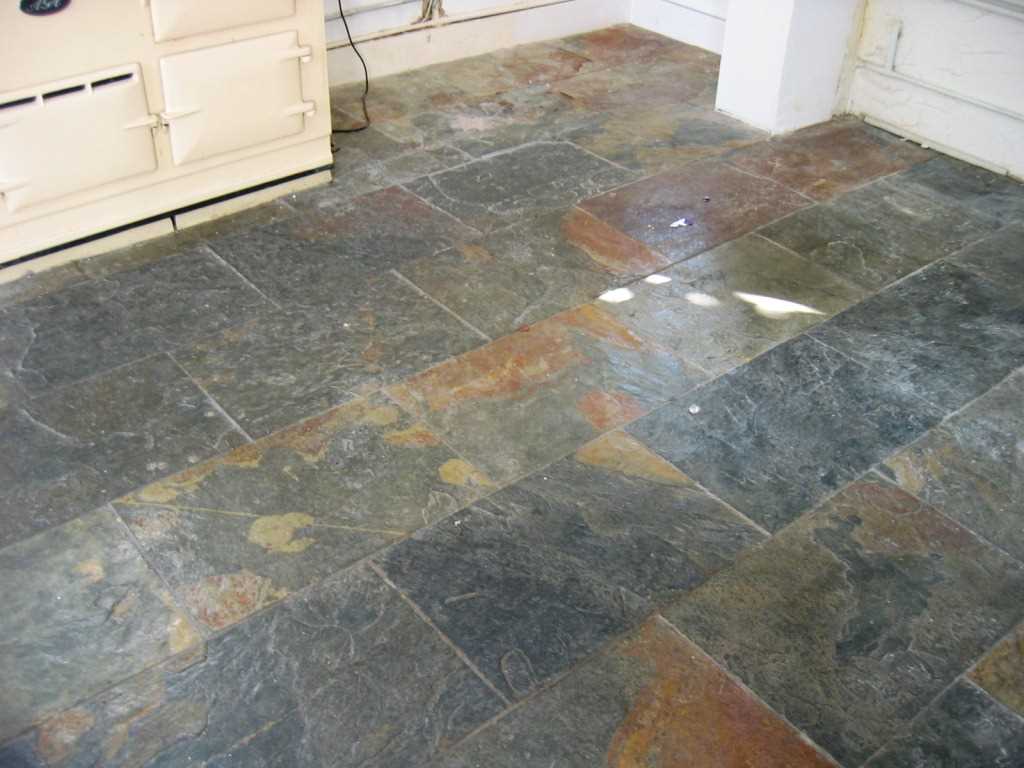
Slate is a natural stone that is sensitive to acidic compounds. Products that contain acids, such as vinegar or lemon juice, can damage the surface of your slate floors. Avoid using any acidic cleaners or solutions.
Use pH-Neutral Cleaners
The safest and most effective cleaning products for slate floors are pH-neutral cleaners. These products are specifically formulated to remove dirt and grime without causing any harm to the surface of the slate. Look for cleaners that are labelled as pH-neutral or slate-specific.
Test the Product on a Small Area
Before applying any cleaning product to your entire slate floor, it’s always a good idea to test it on a small and inconspicuous area. This will allow you to ensure that the product is safe to use and won’t cause any adverse effects on the surface.
Consider Sealing the Slate
Applying a sealant to your slate floors can help protect them from stains and damage. A sealant creates a barrier on the surface of the slate, preventing liquids and dirt from penetrating the stone. Before applying a sealant, make sure to clean the floor thoroughly and follow the manufacturer’s instructions.
Consult with Professionals
If you’re unsure about which cleaning products are suitable for your slate floors or if you’re dealing with stubborn stains, it’s always best to consult with professionals. They can provide expert advice and recommend the most appropriate products for your specific situation.
Remember, regular cleaning and maintenance are crucial for keeping your slate floors in optimal condition. By choosing the right cleaning products and following the proper cleaning techniques, you can ensure that your slate floors stay beautiful and durable for years to come.
Safe and Effective Cleaning Solutions for Slate
1. Water and Mild Soap Solution
The safest and most effective cleaning solution for slate floors is a mixture of warm water and mild soap. This solution is gentle enough not to damage the surface of the slate, but strong enough to remove dirt and grime. To create this solution, mix a few drops of mild soap with warm water in a bucket.
2. Vinegar and Water Solution
Vinegar is a natural cleaning agent that can help dissolve stains and remove residue from slate floors. To create a vinegar and water solution, mix equal parts of vinegar and warm water in a spray bottle. Spray the solution onto the slate floor and let it sit for a few minutes before wiping it away with a clean cloth or mop.
3. Baking Soda Paste
Baking soda is another natural cleaning agent that can be used to clean slate floors. To create a baking soda paste, mix baking soda with a small amount of water until it forms a thick paste. Apply the paste to the stained areas of the slate floor and let it sit for about 15 minutes. Scrub the paste into the stains using a soft brush or sponge, then rinse with warm water.
4. Commercial Slate Cleaners
There are a variety of commercial slate cleaners available on the market that are specifically formulated to clean and maintain slate floors. These cleaners are usually non-abrasive and designed to remove dirt, grime, and stains without damaging the slate. Follow the instructions on the cleaner’s packaging for best results.
5. Avoid Harsh Chemicals
When cleaning slate floors, it is important to avoid using harsh chemicals such as bleach, ammonia, or abrasive cleaning agents. These chemicals can damage the surface of the slate and cause it to lose its natural shine. Stick to mild and natural cleaning solutions to ensure the safety and longevity of your slate floors.
6. Regular Cleaning Routine
To keep your slate floors looking their best, it’s important to establish a regular cleaning routine. Sweep or vacuum the floors regularly to remove dirt and debris, and mop them with a gentle cleaning solution as needed. Avoid using excessive water, as it can seep into the porous surface of the slate and cause damage.
| Cleaning Solution | Effectiveness | Safety |
|---|---|---|
| Water and Mild Soap Solution | ✓✓✓✓ | ✓✓✓✓✓ |
| Vinegar and Water Solution | ✓✓✓✓ | ✓✓✓✓ |
| Baking Soda Paste | ✓✓✓ | ✓✓✓✓✓ |
| Commercial Slate Cleaners | ✓✓✓✓✓ | ✓✓✓✓ |
| Harsh Chemicals | ✓ | ✓✓✓✓ |
Remember to always test any cleaning solution on a small, inconspicuous area of the slate floor before using it on the entire floor to ensure that it does not cause any damage or discoloration.
Tips and Techniques for Cleaning Slate Floors
1. Sweep or vacuum regularly
Slate floors can collect dirt and debris easily, so it’s important to sweep or vacuum your floors regularly to prevent scratching and dulling of the surface. Use a soft-bristle broom or a vacuum with a brush attachment to remove loose dirt and dust.
2. Use a pH-neutral cleaner
When it comes to cleaning slate floors, avoid using harsh or acidic cleaners. These can damage the surface and strip away the natural finish. Instead, opt for a pH-neutral cleaner specifically designed for slate floors. Dilute the cleaner according to the manufacturer’s instructions and mop the floors using a soft mop or microfiber cloth.
3. Remove stains promptly
If you notice any spills or stains on your slate floors, it’s important to clean them up promptly. Blot the spill with a clean, damp cloth or sponge to prevent it from spreading. Avoid using abrasive cleaners or scrub brushes, as these can scratch the surface of the slate. Instead, use a gentle cleaner specifically formulated for removing stains on slate floors.
4. Avoid using excessive water
While it’s important to clean slate floors regularly, it’s equally important to avoid using excessive water. Too much water can seep into the pores of the slate and cause damage over time. Use a damp mop or cloth to clean the floors instead of saturating them with water. Dry the floors thoroughly after cleaning to prevent water spots and stains.
5. Protect the floors from furniture and heavy objects
Prevent scratching and damage to your slate floors by using furniture pads or coasters under heavy objects such as furniture legs or appliances. This will help distribute the weight more evenly and prevent indentation marks on the surface.
6. Apply a sealer
To maintain the natural beauty and protect the surface of your slate floors, consider applying a sealer. A sealer can help prevent staining and make your floors easier to clean. Consult with a professional or refer to the manufacturer’s instructions to find the right type of sealer for your specific type of slate.
7. Regularly reapply sealer
Over time, the protective sealer on your slate floors may wear off. To ensure maximum protection, regularly reapply the sealer according to the manufacturer’s recommendations. This will help prolong the life of your floors and maintain their appearance.
8. Wipe up spills immediately
Accidents happen, but it’s important to wipe up spills immediately to prevent them from potentially staining your slate floors. Use a clean, absorbent cloth or paper towel to blot the spill and remove any excess liquid. Follow up with a gentle cleaner if necessary.
9. Avoid using abrasive tools or cleaners
When cleaning slate floors, it’s important to avoid using abrasive tools or cleaners that can scratch or damage the surface. This includes scrub brushes, steel wool, or harsh cleaning chemicals. Stick to gentle cleaners and soft cleaning tools to protect the natural beauty of your floors.
10. Regularly maintain and inspect the floors
Regularly inspect your slate floors for any signs of wear or damage. Address any issues promptly to prevent further damage. In addition, consider resealing your floors every few years to maintain their appearance and protection.
By following these tips and techniques, you can keep your slate floors looking their best for years to come.
FAQ
What are some general tips for cleaning and maintaining slate floors?
General tips for cleaning and maintaining slate floors include sweeping or vacuuming regularly, wiping up spills immediately, using a pH-neutral cleaner, avoiding abrasive materials, and sealing the slate periodically.
How often should I sweep or vacuum my slate floors?
It is recommended to sweep or vacuum your slate floors at least once a week to remove dirt and debris that can scratch the surface.
What kind of cleaner should I use on my slate floors?
It is best to use a pH-neutral cleaner specifically designed for cleaning natural stone surfaces. Avoid using acidic or alkaline cleaners, as they can damage the slate.
Can I use a steam mop on my slate floors?
No, using a steam mop on slate floors is not recommended. The high heat and moisture can cause the slate to crack or break.
How do I remove stains from my slate floors?
To remove stains from slate floors, create a poultice using a mixture of baking soda and water. Apply the poultice to the stain, cover it with plastic wrap, and let it sit overnight. Then, gently scrub the area with a soft brush and rinse with clean water.
Should I seal my slate floors?
Yes, it is recommended to seal your slate floors to protect them from stains and moisture. The frequency of sealing will depend on the type and condition of your slate, but it is generally recommended to seal them every 1-3 years.
What should I do if my slate floors are scratched?
If your slate floors are scratched, you can try using a stone sealer or enhancer to minimize the appearance of the scratches. If the scratches are deep or extensive, you may need to hire a professional stone restoration company to repair or refinish the slate.





